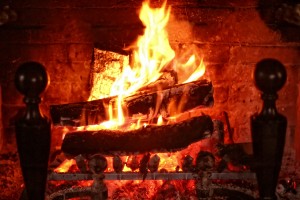Creosote is comprised of more than 200 chemicals that are derived from coal tar or wood tar, which is used to preserve wood. Utility poles, railroad ties, structural foundations, and even fence posts are preserved with creosote. Therefore, it may be a surprise to learn that creosote poses health dangers. Homeowners with fireplaces should be aware that creosote buildup could also pose a fire hazard.
When skin is exposed to creosote, redness, irritation, burning, and swelling may occur. Getting creosote in the eyes may also lead to irritation like burning and could cause the eyes to tear. Breathing in or swallowing creosote fumes may cause the mouth, nose, and throat to become irritated. Even if only small amounts are inhaled or swallowed, over time, the liver, kidneys, and brain may become damaged.
According to the U.S. Environmental Protection Agency, creosote can also cause cancer. When the chemicals are released into the environment, they can contaminate the air, water, and soil. This puts animal, people, and plants at risk of exposure. People suffering from intense or prolonged exposure may be sensitive to light, develop sores on their skin, and experience damaged eyesight.

When people burn a wood fire, gases are released that condensate on walls of the chimney flue tile or liner. These gases form a glazed or tar-like substance that is creosote. If too much of this residue accumulates in the chimney, it becomes a fuel source, potentially leading to a fire within the chimney that cannot be extinguished.
Though homeowners cannot avoid the formation of creosote when burning fires, they can minimize the buildup. Using wood that is dry and well-seasoned and burning fires that are small and hot are two effective methods. Homeowners should also have their chimneys inspected on at least an annual basis and cleaned as necessary to prevent excessive buildup of creosote.

Recent Comments